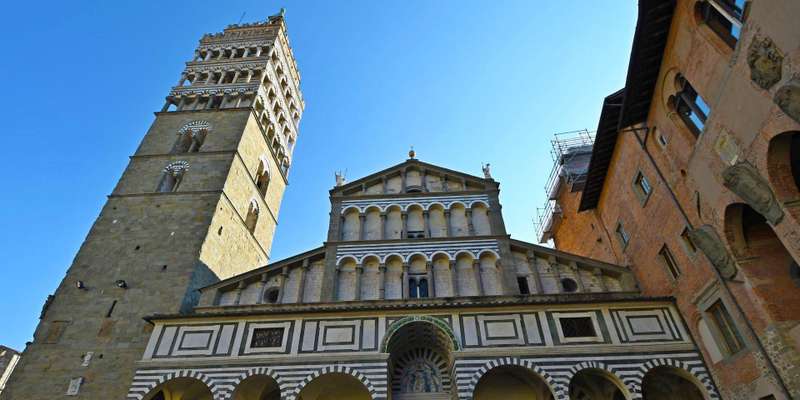- Home
- Useful Tips
- Best areas to stay in Pistoia...
Choosing where to stay in Pistoia to immerse yourself in its rich cultural heritage can be overwhelming. With 72% of travelers reporting they regret poor accommodation choices that distance them from key attractions, the stakes are high. The compact medieval center hides artistic treasures like the Zebra-striped Cathedral and Ospedale del Ceppo’s ceramic frieze, but staying just 500 meters too far can mean missing the morning light on these masterpieces or losing hours to unnecessary transit. First-time visitors often underestimate how Pistoia’s layered history concentrates in specific neighborhoods, leaving them disconnected from the authentic atmosphere they came to experience. This guide cuts through the confusion with precise location intelligence to position you perfectly for spontaneous discoveries.


Why the Cathedral Quarter beats generic 'central' locations
The cobbled streets radiating from Piazza del Duomo form Pistoia’s cultural heartbeat, where your morning cappuccino comes with views of the Romanesque cathedral facade. Unlike vague 'central' bookings that could place you near modern shopping districts, this quarter ensures you’re surrounded by 12th-century landmarks. The Baptistery’s geometric marble patterns become your neighborhood art installation, while the Diocesan Museum’s twilight openings allow after-dinner cultural fixes most tourists miss. Proximity here means witnessing local life – students sketching architectural details, elderly men debating under the loggias – that transforms sightseeing into immersive storytelling. Evening passeggiati (strolls) reveal illuminated monuments without the need for transport, and you’ll appreciate this when discovering how Pistoia’s stone streets challenge wheeled luggage after sunset.
San Bartolomeo’s artisan alleys – for travelers who hate tourist crowds
Northeast of the cathedral, San Bartolomeo’s web of vaulted passageways shelters Pistoia’s most authentic creative spirit. Staying here means your morning walk passes ironworkers forging Renaissance-style railings and bottegas where gilders restore antique frames using techniques unchanged since the Medici era. The neighborhood’s small guesthouses often occupy converted workshops, with exposed brick walls that whisper centuries of craftsmanship. You’ll be perfectly positioned for the weekly market at Piazza della Sala, where food stalls share space with antique print vendors – a scene that feels untouched by mass tourism. This area particularly shines for visitors wanting to balance cultural immersion with quiet nights, as the pedestrianized lanes buffer against weekend noise while keeping major sites within a seven-minute walk.
Ospedale del Ceppo vicinity – when accessibility matters most
For travelers prioritizing step-free access or shorter walks, the flat flagstone area around Pistoia’s famed Renaissance hospital offers smart compromises. The iconic della Robbia ceramics glisten just outside your doorstep, while bus connections to outlying monasteries like San Giovanni Fuorcivitas become effortless. Historic palazzos here have been retrofitted with modern elevators – a rarity in Pistoia – without sacrificing character. You’ll appreciate this when returning with purchases from the Wednesday antiques market or after day trips to Montecatini. The strategic location also provides quicker exits for those combining Pistoia with visits to Lucca or Florence, as the A11 highway access lies just minutes away. Morning coffee at Caffè Duomo comes with wheelchair-friendly seating and front-row views of the cathedral’s zebra-striped arches.
Hidden courtyards near Sant’Andrea – the local secret for longer stays
Those spending a week or more in Pistoia should seek out the residential pockets surrounding Sant’Andrea church. Here, 16th-century noble homes conceal interior gardens and private chapels converted into unique accommodations. You’ll live alongside archivists restoring medieval manuscripts and retired artisans who’ll point you to unmarked workshops creating liturgical vestments. The benefit reveals itself in slow travel moments – helping nonne (grandmothers) water their basil plants, or being invited to aperitivo in a frescoed courtyard most visitors never see. Though slightly further from the cathedral (a 12-minute stroll), these addresses connect you to Pistoia’s living traditions. Many properties include kitchenettes, letting you shop at the legendary produce market like a local rather than relying on restaurants. When the evening passeggiata crowds dissipate, you’ll return to a neighborhood that feels like your own.
